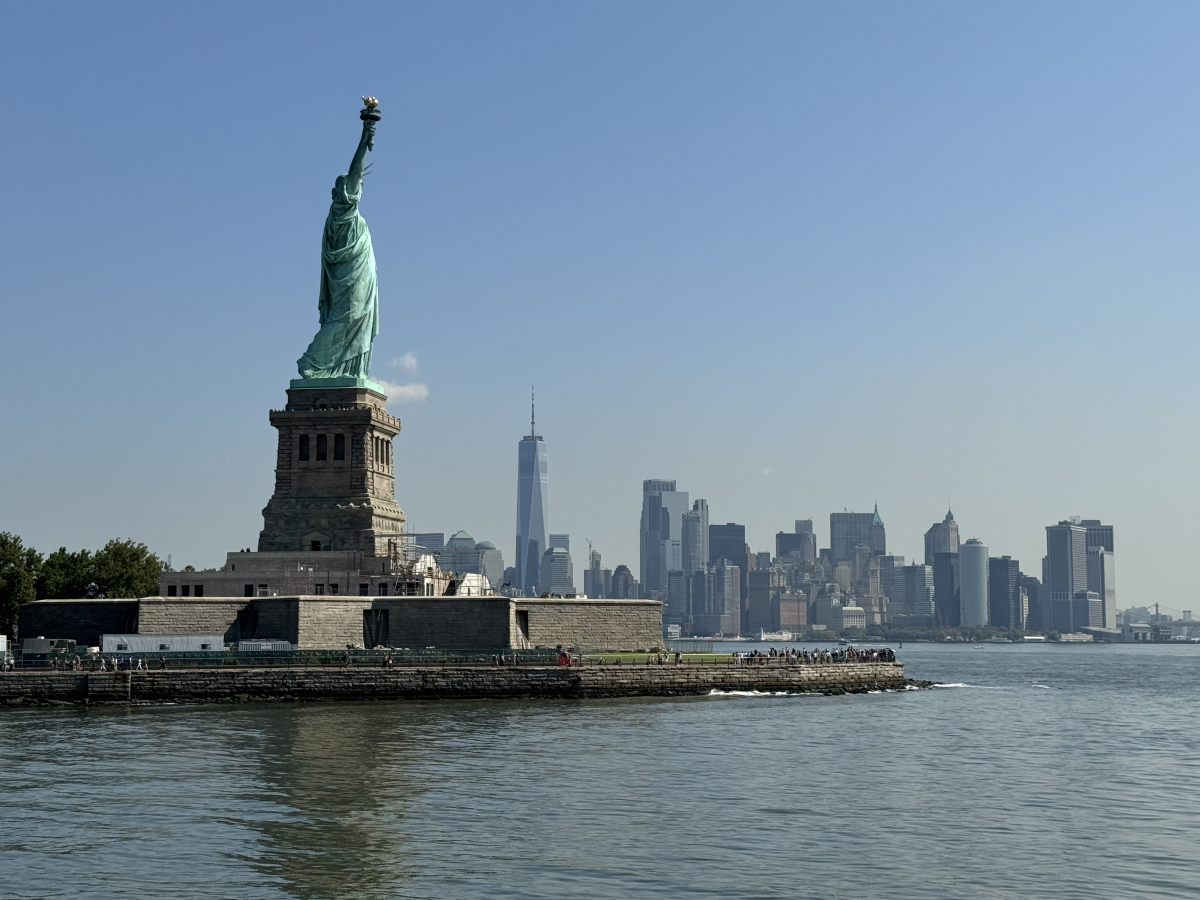Related Posts:
- Buy Tickets for The Constitutional Walking Tour of Philadelphia – See 20+ Sites on a Primary Overview of Independence Park, including the Liberty Bell and Independence Hall
- Remembering Philly's "Ellis Island" and Enjoying Washington Avenue Pier
- Remembering the Liberty to Liberty Triathlon
Two iconic sites dedicated to American Immigrants in the New York Harbor
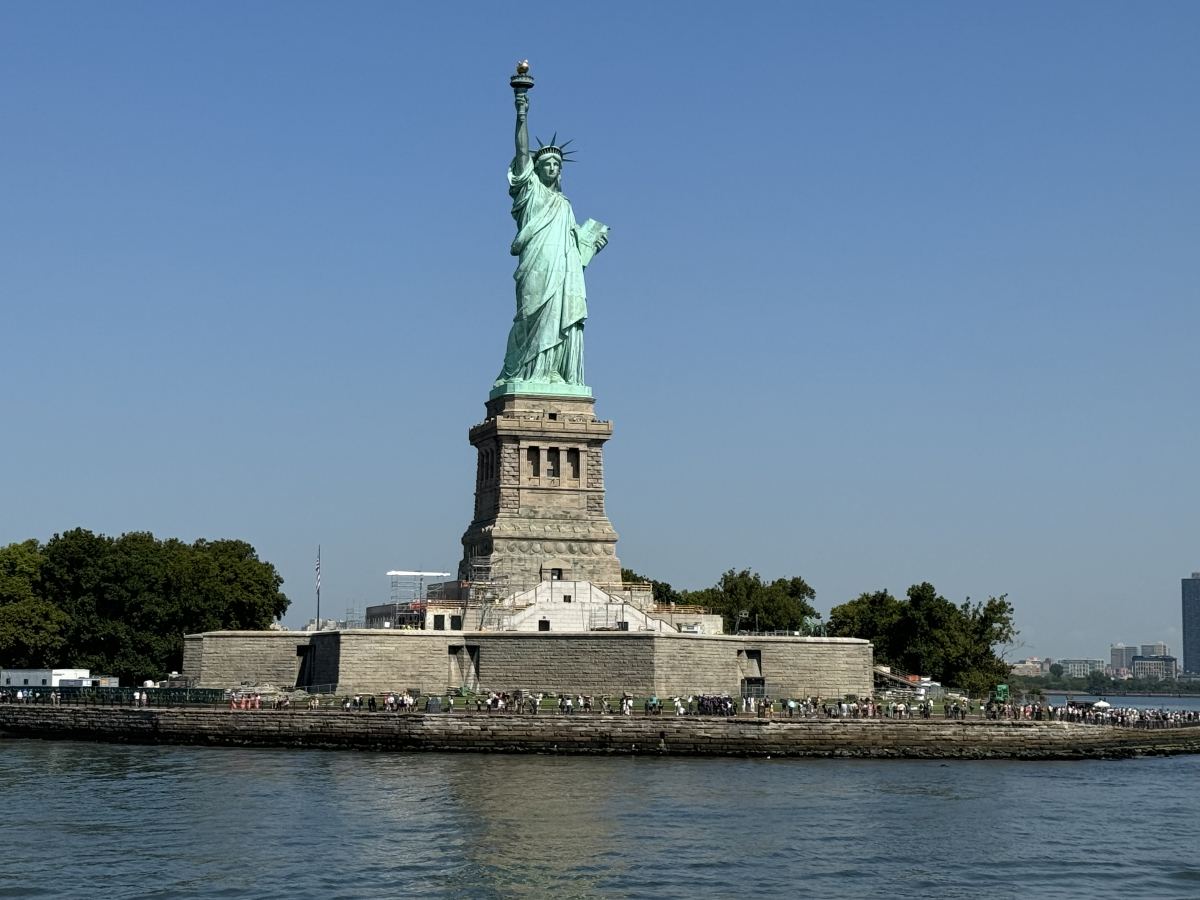
The Statue of Liberty National Monument is a National Monument which includes all of the land on two islands in New York Harbor, Liberty Island and Ellis Island. Liberty Island is home to the Statue of Liberty and the Statue of Liberty Museum. Ellis Island is home to the Ellis Island Immigration Station and the Ellis Island Immigrant Hospital. Today, both islands are managed by the National Park Service and the islands are two of the largest tourist attractions in New York City.
The Statue of Liberty History
Today the Statue of Liberty is mainly viewed as a welcome to American Immigrants and as a celebration of America’s victory in its fight for Independence, though neither topic was the inspiration for its creation. Rather than the Revolutionary War, it was actually the American Civil War that inspired two Frenchmen to create the Statue of Liberty. Édouard de Laboulaye and Frédéric-Auguste Bartholdi were both staunch abolitionists who were happy to hear the news that the Union had won the American Civil War. Laboulaye was a scholar who was an expert on the United States Constitution who saw the end of the Civil War and the passage of the 13th Amendment abolishing slavery as a milestone that reaffirmed the United States ideals of liberty, freedom, and democracy. Laboulaye proposed an idea that America and France jointly build a massive monument celebrating the reaffirmation of America’s founding ideals to Bartholdi, a sculptor and friend of Laboulaye. The two men also hoped that calling attention to the freedom and democracy that the French had helped secure in America would inspire their fellow French people to fight for their own freedom and democracy in the face of the repressive monarchy the French suffered under Napoleon III.
In 1870 Bartholdi began to start modeling concepts for the monument and started to move toward designing a monumental statue that was based on the Roman Goddess of Liberty, Libertas. The following year, Bartholdi traveled to America with the interest of meeting with prominent Americas including President Ulyssess S. Grant, to discuss the creation of the monument. Bartholdi also scouted potential locations for the monument and gravitated toward Bedloe Island (now Liberty Island.) Because of its place in New York Harbor, all ships entering New York sailed past Bedloe Island and the island was already controlled the Federal Government. By 1875 the project was titled “Liberty Enlightening the World” and a fundraising effort had been established with Americans fundraising to build the statue’s pedestal on Bedloe Island and the French fundraising to build the actual statue. Bartholdi was able to have the right arm which bears the torch completed in time to be displayed at the 1876 Centennial Exposition in Philadelphia and two years later the head was displayed at the 1878 Paris World’s Fair as organizers tried to build excitement about the monument and encourage donations.
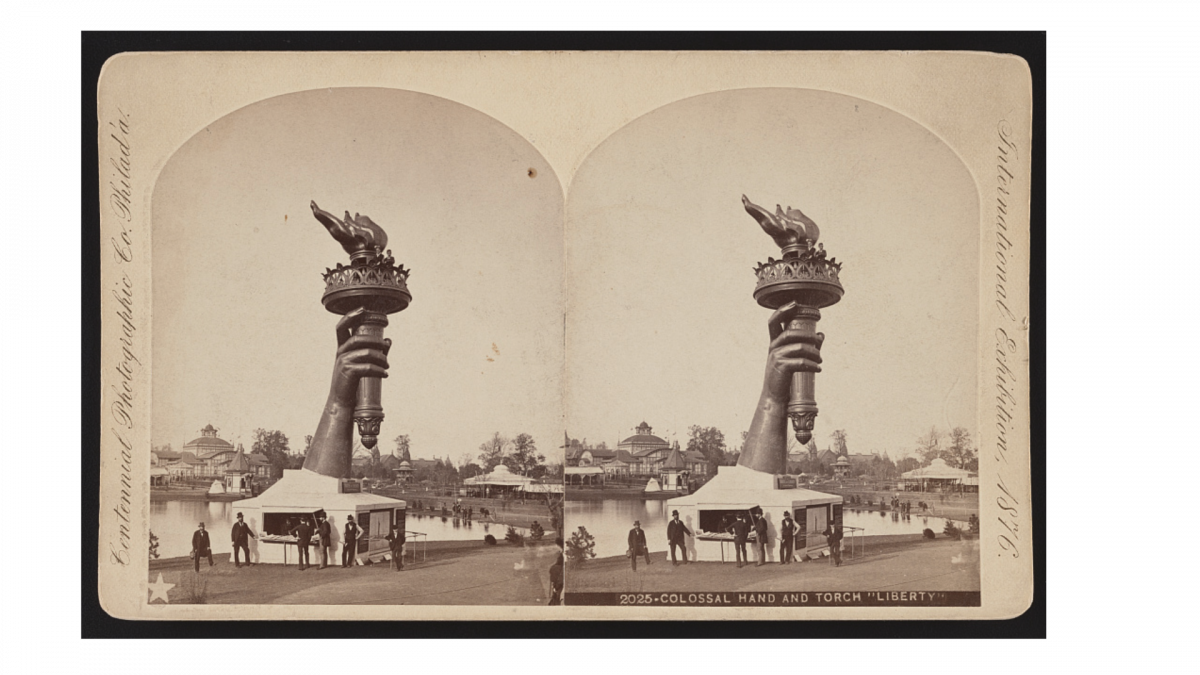
Americans began constructing the base as Bartholdi and his builders fabricated the statue in France and then slowly moved the statue piece by piece across the Atlantic. Though designed by Bartholdi, the actual construction of the interior metal framework that supported the monument was built by Gustave Eiffel who would go on to build the Eiffel Tower.
Liberty Enlightening the World, or the Statue of Liberty was finally completed and officially dedicated on October 28, 1886. At its dedication the statue was a dull copper color that would be unrecognizable today. Within decades though its famous green patina had developed.
In 1901, Georgina Schuyler began a campaign to have a poem about the statue of Liberty of Liberty written by Emma Lazarus to be displayed inside the Statue of Liberty. Lazarus was a New York City poet who had been asked to donate a poem to an art exhibition in 1883 that was to help raise funds for the monument’s pedestal. Lazarus initially declined the request, but after a friend convinced her of the significance the statue would hold for the immigrants arriving in New York Harbor, Lazurus was inspired to write a poem titled “The New Colossus.” Lazarus was Jewish and was actively involved in aiding refugees fleeing anti-Semitic pogroms in eastern Europe. The poem was published in 1883 but was largely forgotten at the time.
Schuyler’s campaign was eventually successful though and in 1903 “The New Colossus” was engraved on a plaque and hung inside the Statue of Liberty. While writing the poem Lazarus thought of the refugees coming into New York Harbor that she worked with and since 1903, the poem has been critical in positioning the Statue of Liberty as a welcoming symbol for new immigrants. The poem reads as follows:
Not like the brazen giant of Greek fame,
With conquering limbs astride from land to land;
Here at our sea-washed, sunset gates shall stand
A mighty woman with a torch, whose flame
Is the imprisoned lightning, and her name
Mother of Exiles. From her beacon-hand
Glows world-wide welcome; her mild eyes command
The air-bridged harbor that twin cities frame."Keep, ancient lands, your storied pomp!" cries she
With silent lips. "Give me your tired, your poor,
Your huddled masses yearning to breathe free,
The wretched refuse of your teeming shore.
Send these, the homeless, tempest-tost to me,
I lift my lamp beside the golden door!"
Ellis Island History
Since the early 1800s Ellis Island had been used by the federal government in the defense of New York Harbor. Fort Gibson had stood on the Island since prior to the start of the War of 1812. After the Civil War however, military use on the island declined and when the Immigration Act of 1891 took immigration affairs from the individual states and federalized them, the Federal Government decided to build an office of Immigration on Ellis Island for all immigrants bound for New York.
The 1890s were a low period for immigration to New York and when Ellis Island first opened it processed fewer than 20,000 immigrants a year, however as immigration increased new facilities had to be built to accommodate all of the immigrants arriving to New York. The Main Immigration building, which still stands today, was completed in 1900. It was capable of processing 5,000 immigrants every single day. Additional facilities such as hospitals and administration offices continued to be constructed on the island and as space became crowded Ellis Island was enlarged with landfill.
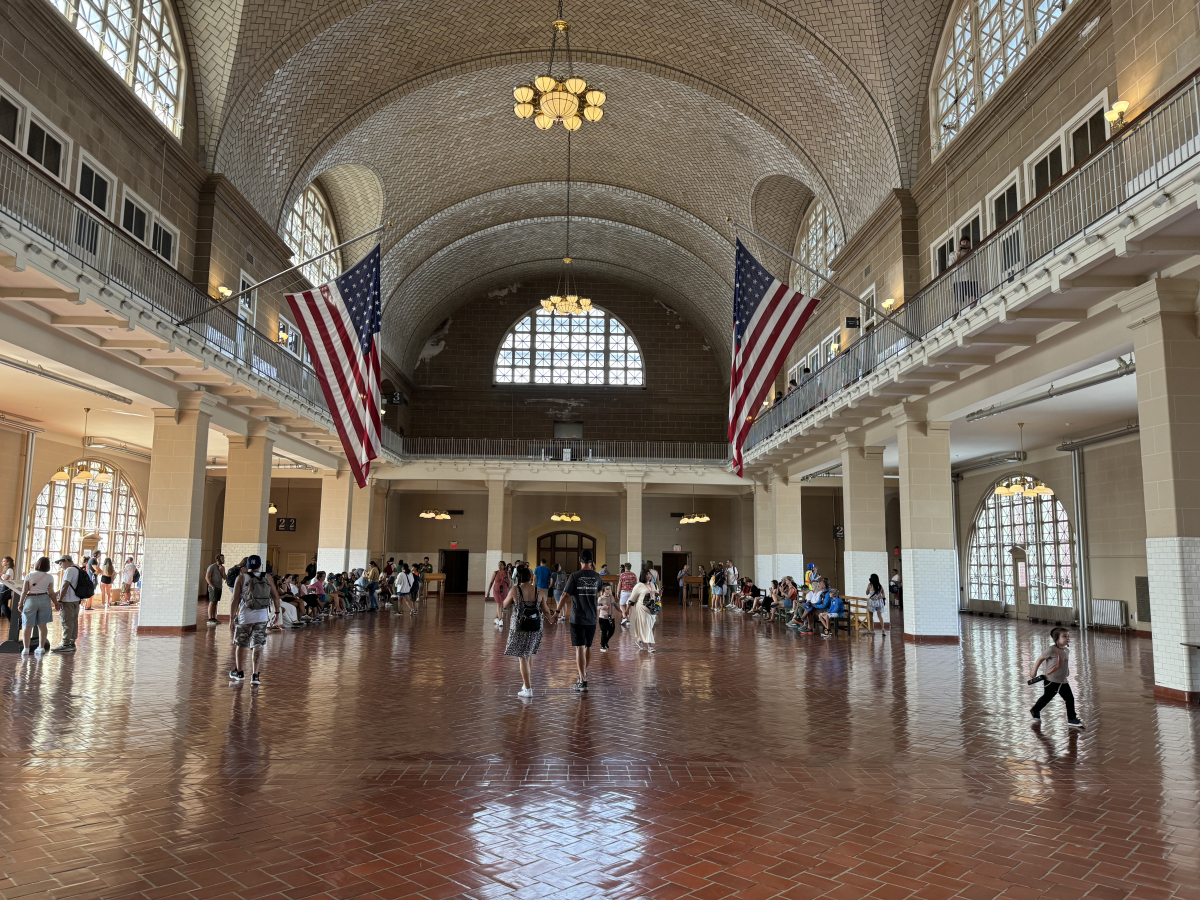
Immigration to Ellis Island was higher than ever in 1920 when efforts began to reduce immigration especially to southern and eastern Europeans who comprised over 50% of all Immigrants arriving to Ellis Island at the time. Anti-Immigrant laws passed in the early 1920s greatly reduced immigration and laws that allowed immigrants to undergo inspections and complete applications in their home countries prior to coming to America reduced the need for Ellis Island. In 1954 the Ellis Island Immigration Station was closed. By the time of its closure, over 12 million immigrants were processed on the island.
In 1965 as the buildings on Ellis Island were deteriorating, President Lyndon B. Johonson recognized the historic significance of the complex and incorporated Ellis Island into the Statue of Liberty National Monument. Ellis Island was subsequently partially restored and operated as a tourist destination by the National Park Service. Today Ellis Island and the Statue of Liberty less than half a mile away serve as monuments to American immigrants and to the founding American ideals of Freedom, Liberty and Democracy.
How to Visit
Both Liberty Island (home to the Statue of Liberty and the Statue of Liberty Museum) and Ellis Island are islands that must be traveled to by boat. While many companies advertise boat rides to see the islands it is important to understand that most of these boats do not actually dock at either island and only allow tourists to see the islands from the boat. Statue City Cruises is the only company that is authorized by the National Park Service to provide access to either island.
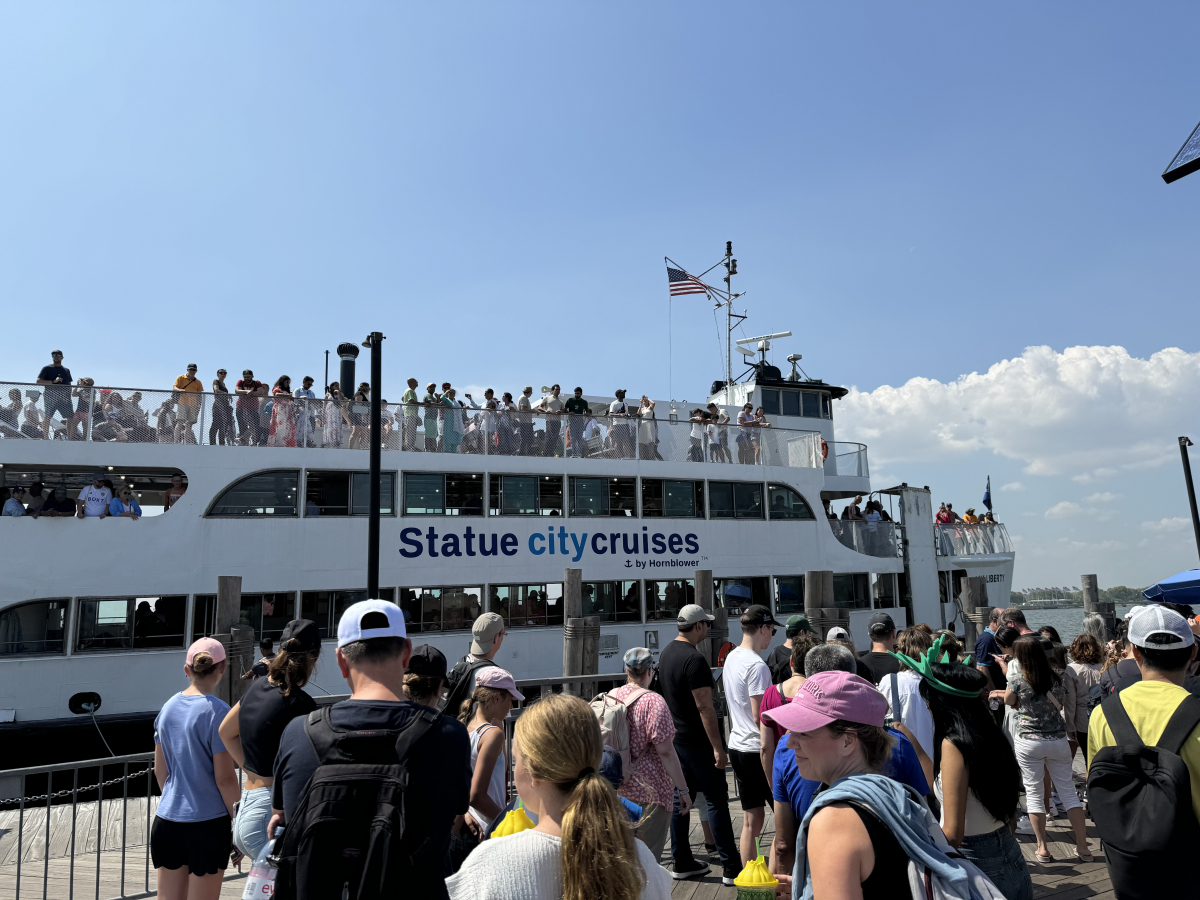
All tickets sold by Statue City Cruises provide access to both Liberty Island and Ellis Island. When purchasing your tickets you can decide to leave from either New York or New Jersey. The New Jersey ferry leaves from Liberty State Park in Jersey City while the New York Ferry leaves from The Battery on Manhattan. Be aware that during the winter months, Ferries do not leave from Liberty State Park in New Jersey and all tours must begin in New York City.
There are also different tickets that give you access to different areas on each island. General admission tickets get you access to both Islands and lets you explore the Statue of Liberty Museums and the grounds of Liberty Island and the grounds of Ellis Island and the Ellis Island National Museum of Immigration. General Admission also includes an audio tour that you can conveniently play on your phone that covers both islands. A Pedestal Reserve ticket adds access to the Pedestal of the Statue of Liberty, while a Crown Reserve Ticket also lets you enter the Pedestal and then proceed up into the Crown of the Statue of Liberty.
Save Ellis Island Tours are special tours that are part of an effort to fundraise the restoration of additional buildings on Ellis Island. These tours allow special access to areas of Ellis Island that are off limits to other visitors including the abandoned Immigrant Hospital Complex. These tours are also known as hard hat tours due to the hard hats you are required to wear while entering these abandoned buildings.
As you might imagine tickets, especially to the Crown of the Statue of Liberty, can be hard to obtain so be sure to try and reserve tickets as far in advance as possible. Be sure to arrive to the Ferry at least 30 minutes in advance and keep in mind that you must go throw an airport style security checkpoint before you able to board your ferry.
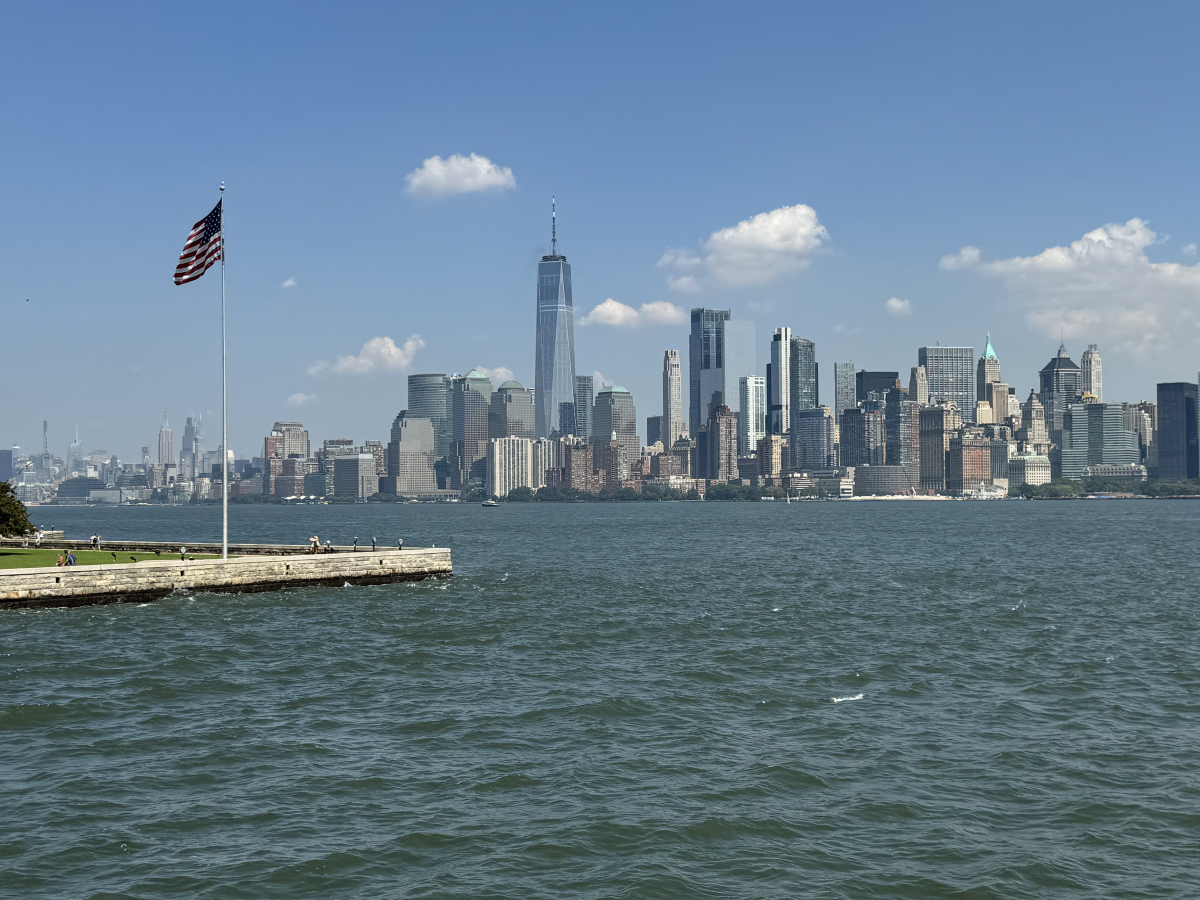
What to See
Aside from the Statue of Liberty, Liberty Island also includes the Statue of Liberty Museum which provides historic context and unique exhibits on the famous monument. This museum is open to all guests. The grounds of Liberty Island also provide incredible views of the New York City Skyline.
On Ellis Island the Main Immigration Building that was originally constructed in 1900 now serves as the Ellis Island Immigration Museum. The Museum is a must see for all visitors. As outlined above, additional unrestored areas of Ellis Island are also possible to see if you take a special hard hat tour.
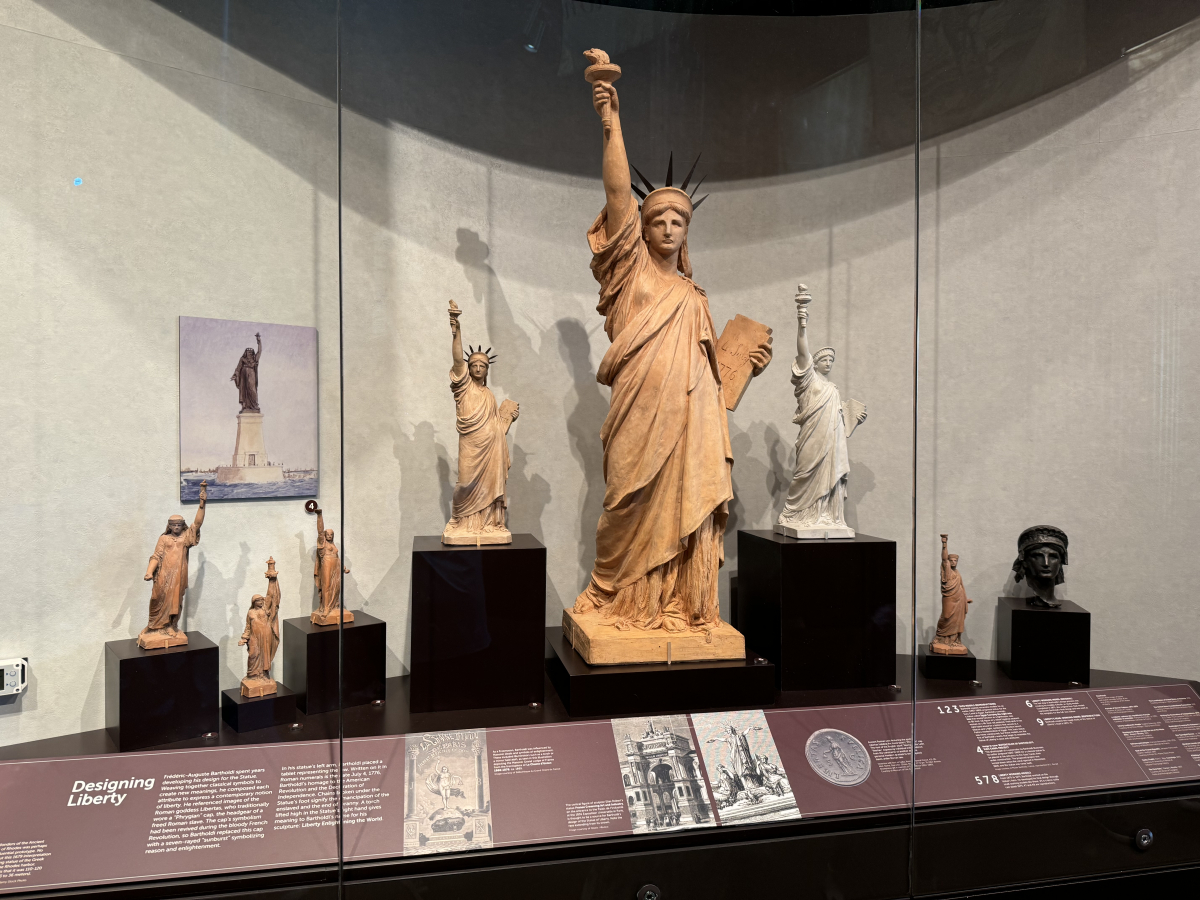
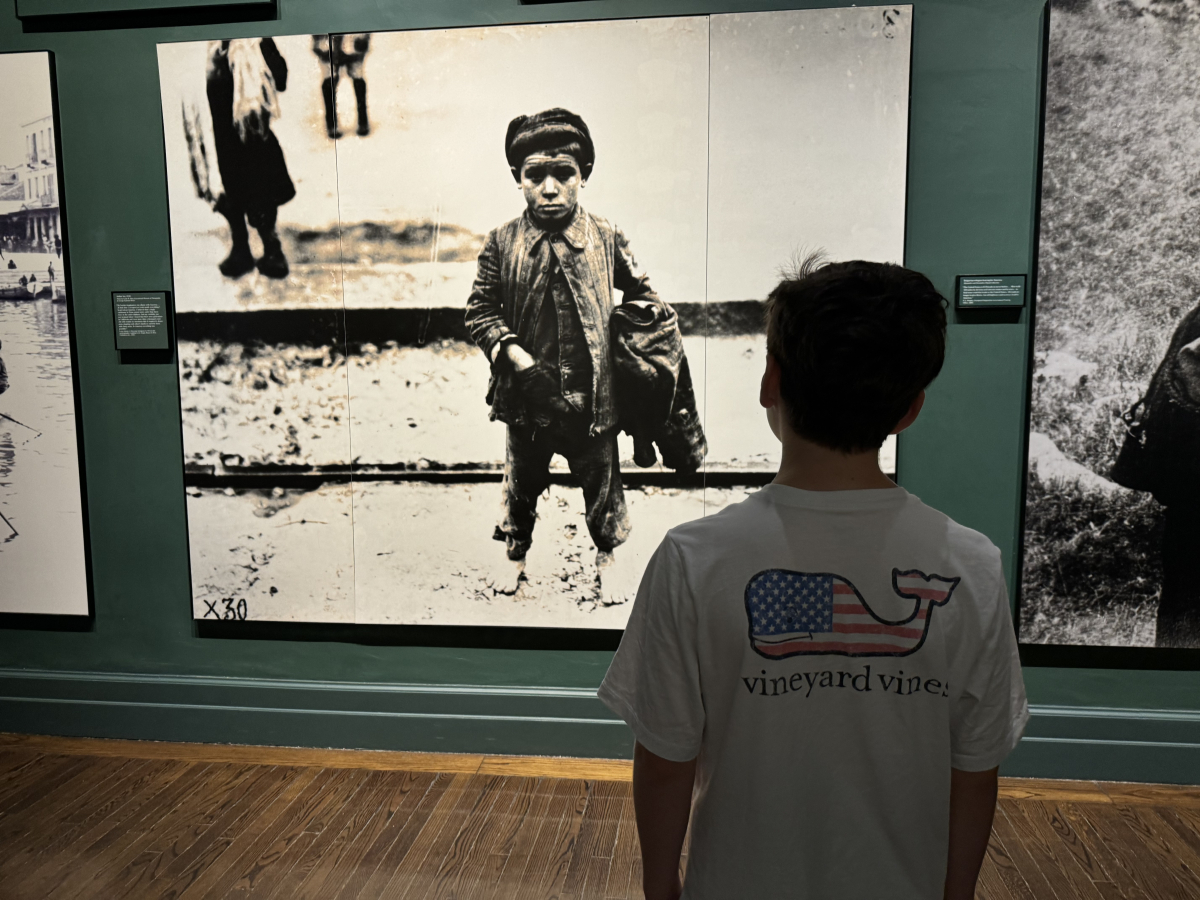
East Coast Road Trip
A road trip of America’s East Coast works great because most of the major cities are located so close to one another and are an easy commute by car, train or plane. Amtrak provides frequent service from Boston, MA to Washington, DC. A trip to New York City is of course, a vital stop on any East Coast Road Trip and a visit to the Statue of Liberty is one of the biggest tourist attractions in the city.
Additional Information
Statue City Cruises
The Battery
New York City, New York 10004
www.cityexperiences.com/new-york/city-cruises/statue/
Statue City Cruises
1 Audrey Zapp Drive
Jersey City, New Jersey 07305
http://www.cityexperiences.com/new-york/city-cruises/statue/
